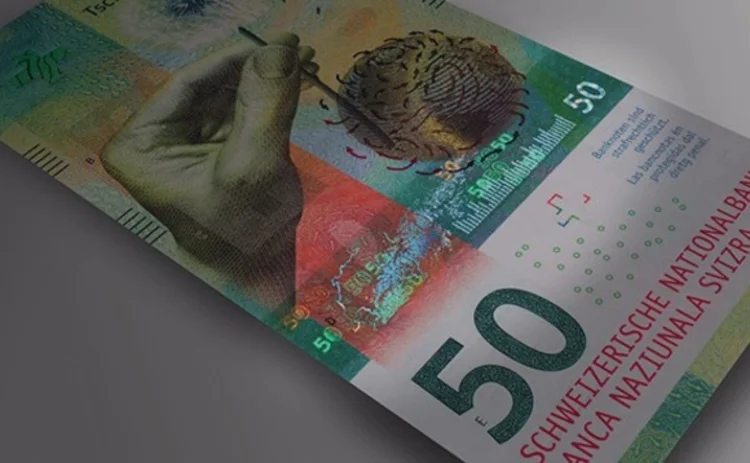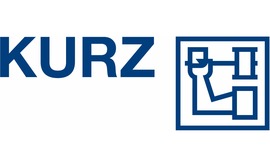
Co-operation: The competitive edge against counterfeiting

 The successful realisation of a new banknote project has never been a more challenging task for central banks than it is today. Besides multiple expectations from various stakeholders, central banks are confronted with a bewildering choice of security features – and the technical complexity of integrating these into a note that runs smoothly in production and in the cash cycle.
The successful realisation of a new banknote project has never been a more challenging task for central banks than it is today. Besides multiple expectations from various stakeholders, central banks are confronted with a bewildering choice of security features – and the technical complexity of integrating these into a note that runs smoothly in production and in the cash cycle.
In recent months, a number of new banknotes and banknote series have been launched successfully and to public acclaim. A major part of the new notes’ success has been the incorporation of cutting-edge security features. Of course, the use of disruptive technologies to stay decisively ahead of the counterfeiter is not without risk. The combination of new materials – sophisticated substrates, advanced inks, complex foils and threads – and the latest production machinery always leads to a step into the unknown.
This article explores the experience of KURZ, which contributed leading-edge foil-based security features to many of the new banknotes as part of a team led by the central banks in a co-operation-based approach to managing new
banknote projects.
Absolute determination
Strong belief in an innovative security feature and a dedication to technical excellence characterise the Swiss National Bank’s (SNB) project to introduce its ninth banknote series. At an early stage in the planning of this series, the technique known as volume holography was proposed to the SNB as a major new advance in securing a banknote. At this time, volume holography was not possible for banknotes due to multiple technical constraints. However, the SNB was convinced that it might be a game changer in anti-counterfeiting, so they teamed up with experienced partners from the currency industry in order to turn this dream into reality.
KURZ was asked to conduct a feasibility study into whether a volume hologram could be used as a surface-applied foil feature. The banknote printer, the machine manufacturer and KURZ established an extensive development programme to achieve a foil manufacturable within reasonable costs and suitable for application to banknotes. From this co-operation the Kinegram volume feature was born.
Work on the feature and the new series took several years, but was always fully supported by the SNB with its clear focus on the most advanced technology and its uncompromising quality expectations. And even when production of the banknotes was under way, the team continued to invest major efforts in permanent optimisation of the production processes, so as to achieve the best possible outcome in industrial foil application and optical appearance. At all times, getting things right was given priority over time pressures.
In parallel with the work in Switzerland, the Bank of Israel also decided to secure its new banknote series with Kinegram Volume, being just as strongly motivated by the new level of optical security offered by this feature. The bank set up regular face-to-face meetings with all the major suppliers into the project. This formal approach to collaboration between companies, which in some cases are in competition with each other, helped greatly to build trust and commitment between the parties and encourage transparent communication. The tight schedule for banknote issuance was initially a cause of concern for the bank, but speedy decisions and its close relationship with the suppliers were beneficial in understanding and dealing with the various technical issues. The suppliers’ honesty in addressing these, and their willingness to work as partners, were indispensable in the success of the project.
Excellent design and high technology
Thousands of miles away, the Reserve Bank of New Zealand (RBNZ) started issuing its ‘Brighter Money’ series in October 2015. This project was characterised by a strong emphasis on design but with extremely tight deadlines. The RBNZ demanded the commitment of all partners from the very first stages of the project, when everyone was assembled to identify potential risks and propose solutions. Based on this initial assessment, the partners committed to a detailed development programme.
One of the main security features is a Kinegram Zero.Zero foil applied in patch format over a clear window in the polymer substrate. For this configuration of foil onto polymer, the existing stamping machine needed to be modified and the foil chemistry adjusted to allow the efficient manufacture of banknotes and excellent optical quality.
 NZ$5 note with Kinegram Zero.Zero foil patch
NZ$5 note with Kinegram Zero.Zero foil patch
The RBNZ had very strict design requirements and took the lead during the design phases of the project, which was extremely valuable for the printer and the component suppliers. The bank’s clear expectations, precise description of tasks and strong belief in the chosen security feature led to a highly efficient and target-oriented collaboration of all partners. Moreover, the RBNZ’s approach was to focus on parallel and continuous subproject evolvement. Within this framework, an iterative process of risk analysis, design and product optimisation, rapid implementation and production was installed. The vision of the RBNZ, and the commitment and hard work of all the members of the project team, were recognised through the prestigious Banknote of the Year award for 2015.
Uncompromising security
The Bank of Canada’s main goal in introducing a new banknote series in 2011, with a wide Kinegram Zero.Zero foil stripe as the principal security element, was a reduction in counterfeiting. The Canada series perfectly illustrates the need for a collaborative approach between industry partners. The bank committed itself to a new substrate and a new security feature, which had never before been combined and required a major rethink of production processes. Clearly this project would never have been realised without a serious team effort. Among the modifications to materials and processes was the effort by the substrate provider, the foiling machine manufacturer and KURZ to find the right solution for applying the foil onto the substrate, which meant establishing new parameters for the traditional banknote hot-stamping process in terms of temperature, speed, optical quality and adhesion strength.
Today, the Bank of Canada can claim a major success against criminals with a 74% reduction in counterfeits in 2015. The Royal Canadian Mounted Police says that serious criminals are not even trying to fake banknotes anymore; the few counterfeits intercepted demonstrate only poor imitations of the new security features.
For a collaborative project on a colossal scale, we turn to the new €20 and €50 banknotes. The European Central Bank (ECB) demanded a quantum leap in security for these denominations, which were seeing the highest rates of counterfeiting. The development project was initiated in 2005 with the core idea of a new foil-in-window technology for the second series of the euro. With the support of the ECB, KURZ took on the commitment to industrialise this concept for the billions of notes used in the eurozone.
The euro is unique among currencies, with multiple national banks, paper manufacturers, banknote printers and component suppliers involved in its production. The ECB has the task of co-ordinating the large number of players in multiple countries under conditions of the strictest security, time constraints and a complex set of rules for public procurement. It goes without saying that, despite the competitive element in the tendering process, a team approach is required for such a large-scale project.
The new foil feature – a Kinegram Review stripe, better known as Portrait Window because the foil runs over a window in the paper, with the goddess Europa visible in transmission – is applied at the paper mill, before the paper is shipped to the printers. All qualified euro paper mills established their individual project plans, then updated and shared them regularly with all project stakeholders under the co-ordination of the ECB.
 New €20 note with Kinegram Review foil stripe
New €20 note with Kinegram Review foil stripe
With regard to the cutting-edge security features of the €20 and €50 notes, especially considering the high volumes of notes to be produced, it was essential for the ECB to find reliable partners that were able to fulfil its expectations of supply chain resilience. Under these circumstances, the focus needed to be on the supplier’s reliability and its track record of successfully bringing novel features to market. It needed to be able to adapt its technology to different conditions, and to have the production capacity to deliver industrial quantities in reliable quality and respecting tight schedules. The company’s legal structure and financial robustness also had to be taken into consideration.
For central banks, it can be a difficult task balancing the demand to secure a new banknote series with the most advanced technology while maintaining the usual principles for public procurement. However, there is leeway for central banks on how to apply the rules on tenders. For a commemorative note used as a test bed, the bank is free to evaluate all available technologies, including single-source. Once the best combination of features is chosen, the final specification goes into live production and circulation.
The series itself can then be subjected to the country-specific tender process, where the chosen – and now proven – single- or restricted-source components can be specified. According to experience, this allows for meaningful solutions for key components and will create a projectable and reliable scenario for both the central bank and the feature supplier. In this scenario, the central bank needs to ensure that the chosen component suppliers can deliver their products to all printers involved in the tender, and that the selected printers will be able to work with the
chosen feature.
Success factors
The following are the most important factors leading to the success of collaborative banknote projects:
- Firm leadership by the central bank. This is much more important than the bank’s involvement in the technical implementation.
- An atmosphere of mutual trust, clear communication lines and readiness to treat success as a team victory. The bank and the partners need to apply transparency and openly discuss all aspects of the project, including challenges and shortcomings.
- All stakeholders must gather around one table and be willing to assume risks and find ways to mitigate these or deal with them together. All risks and challenges must be addressed as early and as openly as possible.
- Time should be treated as a valuable resource. Major advances in security cannot be achieved within a few months. There must be time for a ‘plan B’, and the bank and all partners must be ready to realign the project’s direction if necessary. Investment in testing and feasibility studies contributes to minimising risk.
- The central bank should establish a master plan, based on clear expectations and requirements, to set the direction for the project. Breaking this down into sub-plans for individual tasks can be left to the partners, with the printer playing a dominant role as the system integrator. This extra effort at the beginning of the project will pay for itself in efficient, rapid and reliable execution.
An industry built on trust
Central banks have an ever-more complex job in meeting public expectations for the quality of banknotes, and for remaining ahead of the counterfeiter. They need the resources and skills to meet these demands. By adopting the collaborative approach to banknote projects, central banks have an effective means of delegating some of these requirements to trustworthy industry partners – and thus mitigating risk – without compromising on the use of sophisticated and innovative security solutions. By teaming up with reputable partners from the industry with a track record of delivering on their promises, central banks can be sure of fulfilling the most demanding expectations. The team approach can free up time and resources for the bank’s other priorities. Ultimately, the collaborative approach to banknote projects ensures a more rapid time to market, more efficient management of risk and fewer headaches for the banknote issuer. As Henry Ford said: “Coming together is a beginning; keeping together is progress; working together is success.”
Kinegram, Kinegram Volume, Kinegram Review and Kinegram Zero.Zero are registered trademarks of OVD Kinegram AG, member of the KURZ Group.
Read/download the article in PDF format
Sponsored content
Copyright Infopro Digital Limited. All rights reserved.
As outlined in our terms and conditions, https://www.infopro-digital.com/terms-and-conditions/subscriptions/ (point 2.4), printing is limited to a single copy.
If you would like to purchase additional rights please email info@centralbanking.com
Copyright Infopro Digital Limited. All rights reserved.
You may share this content using our article tools. As outlined in our terms and conditions, https://www.infopro-digital.com/terms-and-conditions/subscriptions/ (clause 2.4), an Authorised User may only make one copy of the materials for their own personal use. You must also comply with the restrictions in clause 2.5.
If you would like to purchase additional rights please email info@centralbanking.com